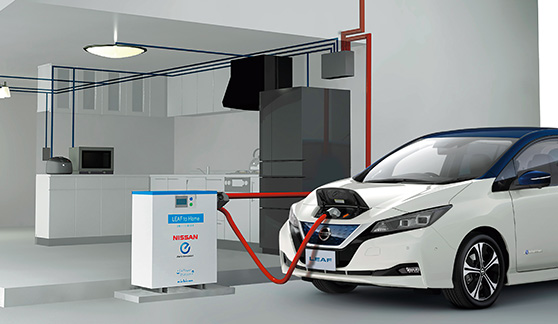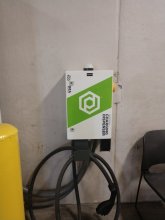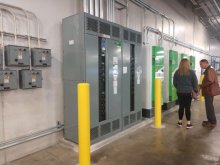Capt Bill
Sailing Options
This tread started in a different Thread/ now growing for a larger conversation:
started from: Nissan Leaf Partnering with AEP Ohio

 diysolarforum.com
diysolarforum.com
... which included Power Sharing Tech link: https://electrek.co/2018/11/28/nissan-energy-leaf-vehicle-to-home-building/
WHO has been experimenting with this idea besides the big guys ????
You might be interested: Nissan Energy Share Technology: There is more info. about this Energy Sharing idea at this link:
Nissan Energy Share is changing the energy model of the world

 www.nissan-global.com
www.nissan-global.com
"Nissan Energy" is the general term for solutions that use the electricity storage and discharge functions of batteries installed in Nissan electric vehicles (EVs), and further improves their appeal. One of those solutions is Nissan Energy Share, where EVs act as mobile storage batteries to supply homes and society with electricity. Nissan is aiming for a distributable energy model, and will contribute to the stabilization of the supply and demand of electricity in the world."
My Curious Mind also searched for :
... Tesla Energy Share & Tesla Energy Share Technology; and so far, ... I have not yet found specifics; Please share if you do.
I find this a fascinating topic. I am wondering what kind of DIY interfaces might get invented for DIYs wanting to use their EVs as their flexible, portable backup house power supply; and/or as part time batteries they could plug in, integrate, and use to expand the Battery Ahs of their current home solar system. ... Food for Thoughts, Experimenting, and Innovations :+)
P.S. My Take: ... I think the likely log jamming bottle neck for these kind of ideas to just take off big time is giant grid owner corporations "being afraid" of losing their monopoly powers.
started from: Nissan Leaf Partnering with AEP Ohio

Nissan Leaf Partnering with AEP Ohio
I just got an email from my electric company, AEP Ohio. I wanted to share this info with the forum because of what I see coming down the pipe. They are offering $6,000 cash back on the purchase of a new Nissan Leaf which can be combined with a $7,500 federal discount. I don’t usually recommend...
... which included Power Sharing Tech link: https://electrek.co/2018/11/28/nissan-energy-leaf-vehicle-to-home-building/
WHO has been experimenting with this idea besides the big guys ????
You might be interested: Nissan Energy Share Technology: There is more info. about this Energy Sharing idea at this link:
Nissan Energy Share is changing the energy model of the world

Nissan Energy Share | Innovation |
Nissan’s Nissan Energy Share: Nissan’s various technologies, including electrification, autonomous drive, connected car & service, mobility service, and energy management, are introduced.
"Nissan Energy" is the general term for solutions that use the electricity storage and discharge functions of batteries installed in Nissan electric vehicles (EVs), and further improves their appeal. One of those solutions is Nissan Energy Share, where EVs act as mobile storage batteries to supply homes and society with electricity. Nissan is aiming for a distributable energy model, and will contribute to the stabilization of the supply and demand of electricity in the world."
My Curious Mind also searched for :
... Tesla Energy Share & Tesla Energy Share Technology; and so far, ... I have not yet found specifics; Please share if you do.
I find this a fascinating topic. I am wondering what kind of DIY interfaces might get invented for DIYs wanting to use their EVs as their flexible, portable backup house power supply; and/or as part time batteries they could plug in, integrate, and use to expand the Battery Ahs of their current home solar system. ... Food for Thoughts, Experimenting, and Innovations :+)
P.S. My Take: ... I think the likely log jamming bottle neck for these kind of ideas to just take off big time is giant grid owner corporations "being afraid" of losing their monopoly powers.
Last edited:





![HondaPowerExporter [640x480].jpg HondaPowerExporter [640x480].jpg](https://diysolarforum.com/data/attachments/28/28391-b28cf3b9ca79265e69a0346c953f31f9.jpg)
